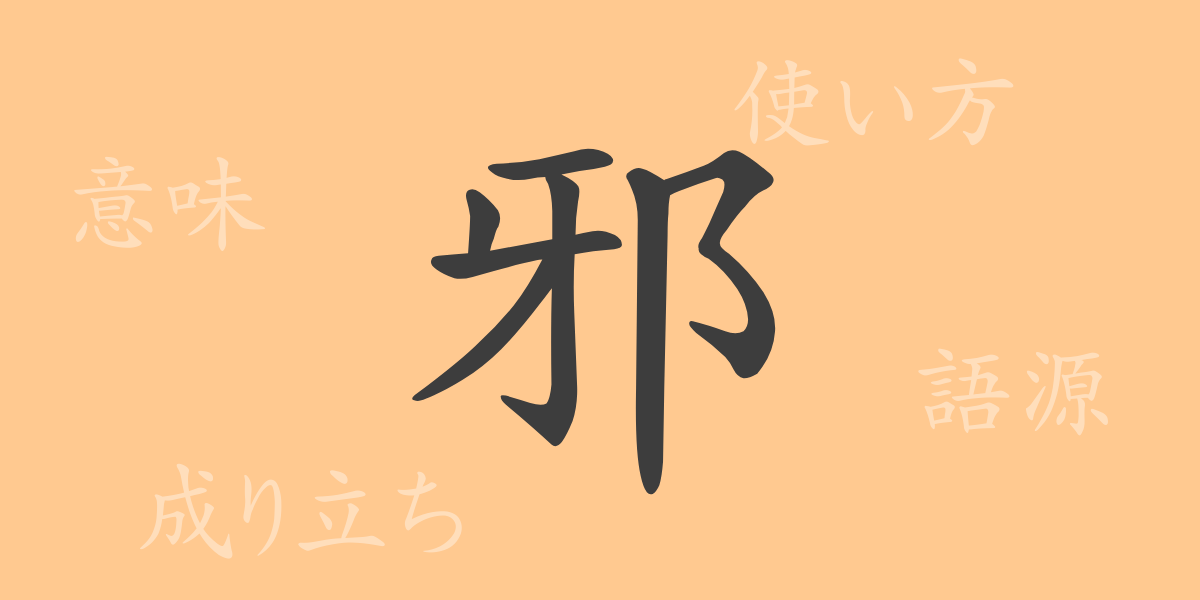Exploring the history embedded in each stroke of a character is akin to delving into the depths of language itself. The focus of our exploration today is the commonly used Japanese kanji “邪(じゃ).” By unraveling the stories behind the unique sound and meaning of this character, we will uncover its role and allure in the Japanese language.
Origins of 邪(じゃ) (Etymology)
The kanji “邪(じゃ)” originates from ancient China. Its etymology stems from the concept of deviating from the correct path, essentially meaning “to stray from the righteous path.” This character has long been used in people’s lives to express moral and ethical concepts.
Meanings and Uses of 邪(じゃ)
The kanji “邪(じゃ)” primarily conveys negative meanings such as “incorrect,” “contrary to the path,” and “unjust.” For instance, committing evil deeds or acts of injustice is expressed as “邪悪(じゃあく)” (wickedness), while something deviating from correct beliefs or principles is referred to as “邪教(じゃきょう)” (heresy). This character finds usage in a wide range of contexts.
Readings, Stroke Count, and Radical of 邪(じゃ)
Let’s delve into the readings and structure of the kanji “邪(じゃ).”
- Readings: The on’yomi (音読み) is “ジャ(じゃ),” and the kun’yomi (訓読み) is “よこしま(よこしま).”
- Stroke count: The total stroke count for “邪(じゃ)” is 8.
- Radical: The radical for “邪(じゃ)” is 邑(むらがまえ).
Idioms, Phrases, and Proverbs Using 邪(じゃ)
There are numerous idioms, phrases, and proverbs in Japanese that include the kanji “邪(じゃ).” For example, “邪魔(じゃま)” means to hinder or the hindrance itself. “邪気(じゃき)” denotes bad energy or an ominous atmosphere, while “邪推(じゃすい)” refers to making unfounded malicious speculations. These terms are frequently used in daily conversations, literature, and business contexts.
Conclusion on 邪(じゃ)
The kanji “邪(じゃ)” encompasses a multitude of meanings far beyond its simple form. While it serves as a warning against straying from the righteous path, it also plays a role in expanding the breadth of expression in the Japanese language. Understanding the profound history and meaning of this single character can significantly deepen your appreciation and comprehension of Japanese.

























